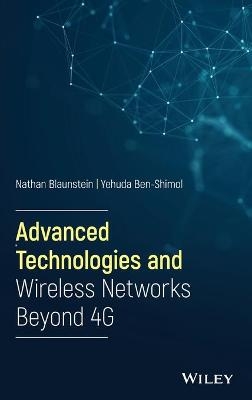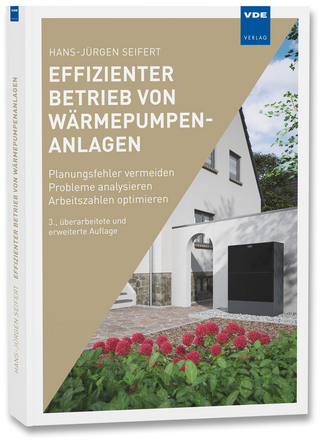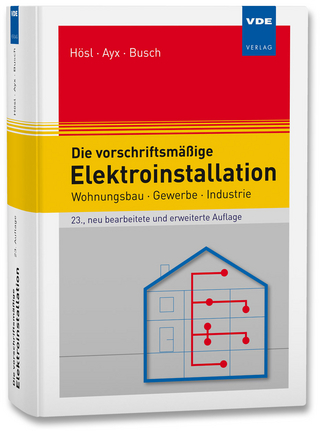
Advanced Technologies and Wireless Networks Beyond 4G
John Wiley & Sons Inc (Verlag)
978-1-119-69244-7 (ISBN)
Wireless Networks Technologies offers an authoritative account of several current and modern wireless networks and the corresponding novel technologies and techniques. The text explores the main aspects of the "physical layer" of the technology. The authorsnoted experts on the topicexamine the well-known networks (from 2-G to 3-G) in a historical perspective. They also illuminate the "physical layer" of networks while presenting polarization diversity analysis and positioning of any subscriber located in areas of service both for land-to-land and land-to-atmosphere communication links.
The book includes clear descriptions of planning techniques for different integrated femto/pico/micro/macrocell deployments. The authors also examine new technologies of time and frequency dispersy and multiple-input and multiple-output (MIMO) modern network design in space and time domains. In addition, the text contains a discussion of a MIMO network based on multi-beam adaptive antennas. This important book:
Provides an examination of current and modern wireless networks
Describes various techniques of signal data capacity and spectral efficiency based on the universal stochastic approach
Explains how usage of MIMO systems with adaptive multi-beam antennas increase the grade of service and quality of service of modern networks beyond 4-G
Provides comparative analysis of depolarization effects and the corresponding path loss factor for rural, mixed residential, suburban, and urban land areas
Written for students and instructors as well as designers and engineers of wireless communications systems, Wireless Networks Technologies offers a combination of physical and mathematical-statistical approaches to predict operational parameters of land-to-land and land-to-atmosphere personal and mobile wireless communication networks.
NATHAN BLAUNSTEIN, PhD., DSc, is a Professor in the School of Electrical and Computer Engineering, Ben Gurion University of the Negev, Beer Sheva, Israel. YEHUDA BEN-SHIMOL, PhD, is a Senior Lecturer at the School of Electrical and Computer Engineering, Ben-Gurion University of the Negev, Beer Sheva, Israel.
Acknowledgements xi
Preface xiii
Acronyms xix
Part I Objective 1
1 Overview of Wireless Networks – From 2G to 4G 3
References 6
2 Terrestrial Wireless Networks Based on Standard 2G and 3G Technologies 9
2.1 Bluetooth-WPAN Networks 9
2.2 Wi-Fi–WLAN Networks 11
2.2.1 Integrated WLAN and WPAN Networks 13
2.2.2 Enhancement of the WLAN Technology 14
2.3 WiMAX Networks and 802.16 Technologies 15
2.3.1 Integrated Wi-Fi–WiMAX Networks 17
2.4 LTE Current Technologies 20
References 24
Part II Physical Layer of Wireless Networks Beyond 4G 33
3 Link Budget Design in Terrestrial Communication Networks 35
3.1 Total Path Loss and Link Budget – Physical Layer of Any Network 35
3.1.1 White Noise 36
3.1.2 Slow Fading 36
3.1.3 Fast Fading 37
3.1.4 Antenna Gain 38
3.1.5 Average Attenuation 38
3.1.5.1 Line of sight 38
3.1.5.2 Non-line-of-sight 39
3.2 The Terrain Propagating Models for Total Path Loss Prediction 40
3.2.1 Hata–Okumura Model 40
3.2.2 Bertoni Multidiffraction Model 42
3.2.3 Walfisch—Ikegami Model (COST 231 Standard) Based on Analytical Bertoni Model 43
3.2.4 Stochastic multiparametric model 44
3.2.4.1 Parameters of the model 44
3.2.4.2 Effect of buildings’ overlap profile 45
3.2.4.3 Signal intensity distribution 46
3.3 Validation of Most Suitable Models via the Recent Experiments 47
3.4 Link Budget Design in Land–Atmosphere and Atmosphere–Land Communication Networks 50
3.4.1 Content and Main Parameters of the Troposphere 51
3.4.1.1 The content 51
3.4.1.2 Main parameters of troposphere 52
3.4.2 Effects of Tropospheric Features on Signal Propagation 54
3.4.2.1 Main features occurring in the troposphere 54
3.4.2.2 Molecular–Gaseous absorption 55
3.4.2.3 Effects of rain 57
3.4.2.4 Effects of clouds 60
3.4.2.5 Effects of turbulence 62
3.5 Link Budget Design 67
3.5.1 Path Loss in Free Space 67
3.5.2 Link Budget Design 67
References 70
4 Polarization Diversity Analysis for Networks Beyond 4G 73
4.1 Depolarization Phenomena in Terrain Channels 73
4.2 Model by Stocks Parameters 74
4.3 The Multiparametric Stochastic Model Application for Polarization Parameters Prediction 77
4.4 Numerical Analysis of Probability Functions for Parameters of the Spatial Polarization Ellipse 81
4.4.1 Mixed-residential Areas 81
4.4.2 Suburban and Urban Areas 83
4.5 Analysis of Polarization Ellipse Energetic Parameters 85
4.5.1 The Ratio Δ vs. the BS Height 85
4.5.2 The Δ Ratio vs. the Distance Between BS and MS Antennas 89
4.6 Analysis of the Loss Characteristics 89
4.6.1 Horizontal Component of the Total Elliptically Polarized Field 91
4.6.2 Vertical Component of the Total Field 91
4.7 Path Loss Factor Due to Depolarization Phenomena 92
4.8 Conclusions 95
References 97
5 Theoretical Framework for Positioning of Any Subscriber in Land–Land and Atmosphere–Land Multiuser Links 99
5.1 Signal Power Distribution in the Space, AOA, TOA, and Frequency Domains for Prediction of Operative Parameters of Sectorial and Multibeam Antennas 101
5.1.1 Signal Intensity Distribution in Space Domain. According to 3-D Stochastic Approach 101
5.1.2 Signal Energy Distribution in Angle-of-Arrival (AOA) and Time-of-Arrival (AOA) Domains 102
5.1.3 Signal Power Spectrum in the Frequency and Doppler-Shift (DS) Domains 106
5.2 Localization of Any Subscriber in Land Built-Up Areas 109
5.2.1 3-D Stochastic Model for Different Scenarios of Buildings’ Layout 109
5.2.2 Analysis of the Accuracy of MS Localization in Predefined Urban Scenarios 113
5.2.2.1 Example 1: The statistical model vs. ray-tracing simulation according to the topographic map 113
5.2.2.2 Example 2: MS and BS antennas are below the rooftop level 113
5.2.2.3 Example 3: MS antenna is below and BS antenna is above the rooftop level 115
5.2.2.4 Example 4: Multiple MS locations 116
5.3 Positioning of Any Subscriber in Multiuser Land–Atmosphere Communication Links 122
5.3.1 Signal Distribution in the Time-Delay Domain 122
5.3.2 Signal Distribution in the Doppler-Shift Domain 124
References 126
Part III Advanced Integrated-Cell Technologies for Modern 4G and 5G Networks 129
6 Femto/Pico/Micro/Macrocell Network Deployments for Fourth and Fifth Generations 131
6.1 Channel Capacity Models in Integrated Femtocell–Microcell/Macrocell Networks 133
6.1.1 Shared Spectrum Assignment (SSA) with Closed Subscriber Group (CSG) 134
6.1.2 Shared Spectrum Assignment (SSA) with (OSG) 134
6.1.3 Dedicated Spectrum Assignment (DSA) with Closed Subscriber Group (CSG) 135
6.1.4 Dedicated spectrum assignment (DSA) with open subscriber group (OSG) 135
6.2 Analysis of Femto/Pico/Micro/Macrocell Networks Based on Propagation Phenomena 136
6.2.1 Propagation Aspects in Integrated Indoor and Outdoor Communication Links 136
6.2.1.1 Outdoor propagation model 137
6.2.1.2 Indoor propagation model 139
6.2.2 Experimental Verification of the Total Path Loss in Femtocell–Picocell Areas 143
6.3 Different Integrated Femto/Pico/Micro/Macrocell Network Deployments 145
6.3.1 Femtocells Integrated into Microcell Network Pattern 145
6.3.2 Femto/Pico/Microcell Configuration Deployment 149
6.3.2.1 Results of the numerical computations 153
References 157
Part IV Mega-Cell Satellite Networks–Current and Advanced 161
7 Advanced Multicarrier Diversity in Networks Beyond 4G 163
7.1 Advanced Multicarrier-diversity Techniques 163
7.2 Advanced Frequency Multicarrier-diversity Techniques 165
7.3 Advanced OFDM and OFDMA Technologies 167
7.3.1 Orthogonal Frequency-Division Multiplexing 168
7.3.2 Orthogonal Frequency-Division Multiple Access 173
7.4 Advanced Time Multicarrier-diversity Techniques 175
References 178
8 MIMO Modern Networks Design in Space and Time Domains 181
8.1 Main Principles of MIMO 181
8.2 Modeling of MIMO Channel Capacity 184
8.3 Fading Correlation in Space–Time Doman in Urban Environment with Dense Building Layout 187
8.4 Correlation Coefficient Analysis in Urban Scene 188
8.5 MIMO Channel Capacity Estimation 189
8.6 Analysis of MIMO Channel Capacity in Predefined Urban Scenario 190
References 192
9 MIMO Network Based on Adaptive Multibeam Antennas Integrated with Modern LTE Releases 197
9.1 Problems in LTE Releases Deployment 197
9.2 Multibeam MIMO with Adaptive Antennas Against Fading Phenomena in LTE Networks 199
9.3 Analysis of the Multibeam Effect for a Specific Environment 201
9.4 Summary 206
References 208
10 Satellite Communication Networks 211
10.1 Overview of Satellite Types 211
10.2 Signal Types in LSC Links 212
10.3 Overview of Experimentally Approbated Models 214
10.3.1 Lutz Pure Statistical Model 215
10.3.2 Physical–Statistical Approach 216
10.3.2.1 Saunders–Evans physical–statistical model 217
10.3.2.2 Multiparametric stochastic model 219
10.4 Comparison Between Saunders–Evans and the Stochastic MultiparametricModel 223
10.5 Land–Satellite Networks – Current and Advanced Beyond 4G 225
10.5.1 Current Land–Satellite Networks 225
10.5.1.1 Inmarsat 225
10.5.1.2 North American MSAT system 226
10.5.1.3 Australian mobile satellite system (OPTUS) 227
10.5.1.4 Japanese n-star mobile communications system 227
10.5.1.5 Other mobile–satellite systems 228
10.5.2 Advanced Satellite Networks Performance 229
10.5.2.1 Iridium 229
10.5.2.2 Globalstar 231
10.5.2.3 ICO-global 233
10.5.2.4 European inmarsat BGAN 234
10.5.2.5 Advanced GSM–satellite network 235
10.5.3 Operational Parameters Prediction in Advanced Land–Satellite Networks 235
10.6 Summary 238
References 239
Index 241
| Erscheinungsdatum | 25.02.2021 |
|---|---|
| Verlagsort | New York |
| Sprache | englisch |
| Maße | 10 x 10 mm |
| Gewicht | 454 g |
| Themenwelt | Technik ► Elektrotechnik / Energietechnik |
| Technik ► Nachrichtentechnik | |
| ISBN-10 | 1-119-69244-X / 111969244X |
| ISBN-13 | 978-1-119-69244-7 / 9781119692447 |
| Zustand | Neuware |
| Informationen gemäß Produktsicherheitsverordnung (GPSR) | |
| Haben Sie eine Frage zum Produkt? |
aus dem Bereich


